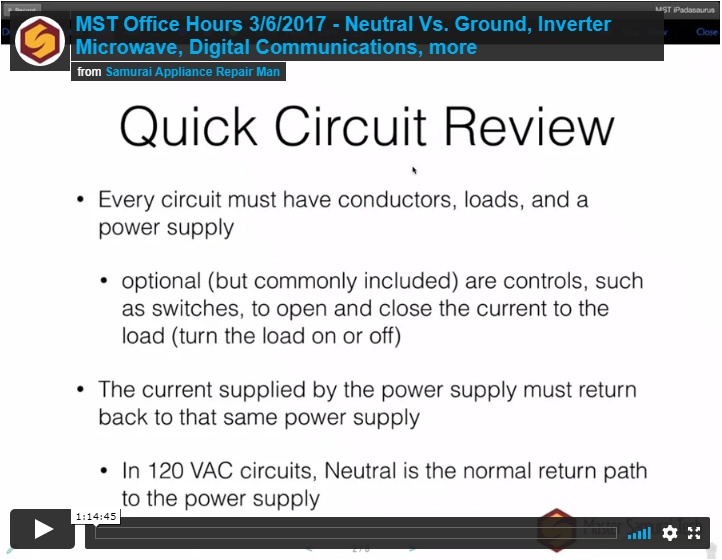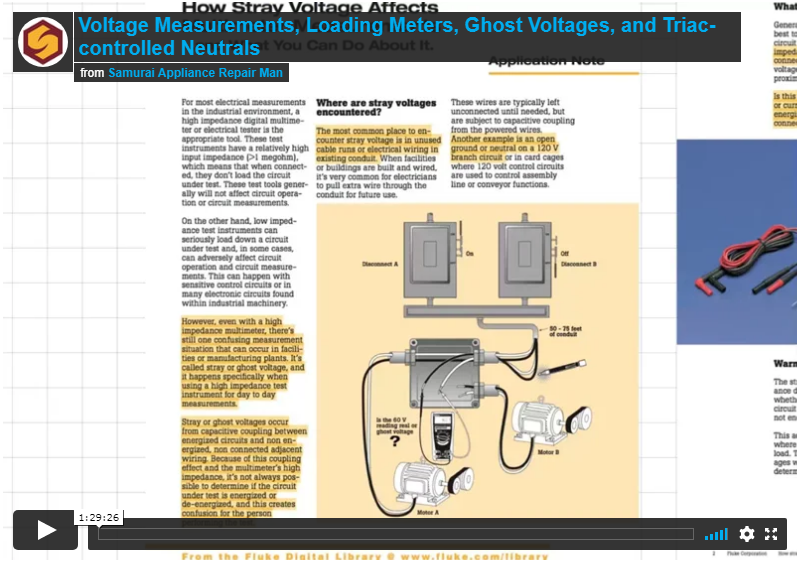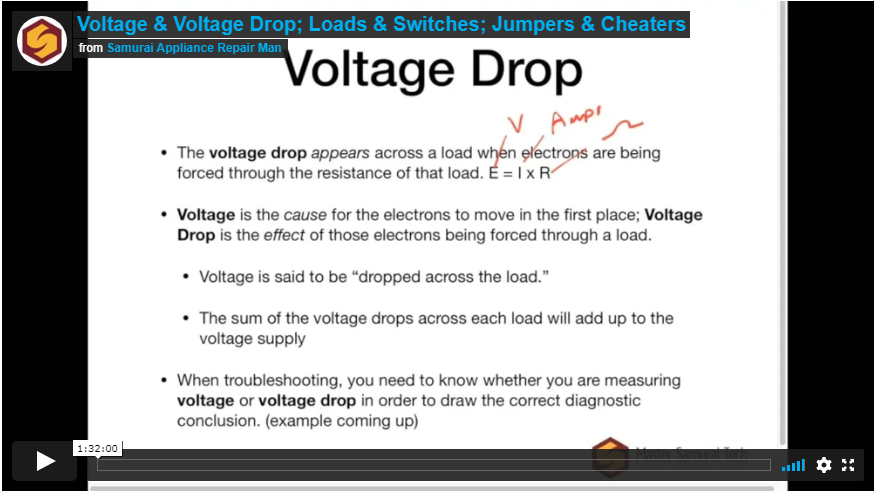How to Never Get Tricked by an Open Neutral Again
Here's the situation: the tech has a Maytag dishwasher with no lights, no life, no nothin'.
With a multimeter on LoZ, the tech has already checked the following with reference to ground. Here are his findings that he reported:
Quote1. The wall outlet -- found 120 volts
2. The power supply to the board -- found 120 volts
3. Neutral -- found 48 volts
Seeing that there was a solid 120 volts to the board and no operation, the tech concluded (with the aid of a few ohm checks across the control board) that the board was the culprit. He replaced it, and...
Still nada.
How could such a seeming slam-dunk troubleshoot turn on him like that? Well, there's much to be learned from this troubleshoot that some of you sharp techs out there may have already noticed. Let's step through the issues one at a time.
1. Testing with reference to ground. In the world of AC power, ground does not equal neutral and neutral does not equal ground. There should be no voltage potential difference between Ground and Neutral (that is, 0 VAC, but typically less than 1 VAC), but in cases like this, where you have an open neutral, that isn't necessarily the case. See this webinar for more on this:
2. Finding voltage on neutral. This is a big red flag. The only time when you will read voltage on neutral is when the neutral is disconnected from the power source. You're picking up on capacitively coupled ghost voltage. What is ghost voltage? This webinar has the answer:
Key point with voltage measurements: you’re never measuring voltage at a particular point with your meter; you are always measuring the voltage difference between two points. That’s why it takes two leads on your meter to make a voltage measurement. So the tech’s statement that he measured “48 volts on Neutral” revealed that he didn’t understand this key concept.
3. Relying on ohms testing. Ohms are strictly a preliminary test, and they're one of the more unreliable measurements we have in our arsenal. Moreover, using ohms to measure across control board contacts just isn't a correct use of that measurement. See more about doing real, informed tests in this webinar:
In the end, the tech workshopped the problem with his fellow techs at Appliantology and came to the correct conclusion: the problem isn't in the appliance, but somewhere in the house power supply -- most likely a bent neutral contact in the wall outlet.
Scenarios like this are great demonstrations of troubleshooting and electricity fundamentals, and they're excellent learning opportunities for techs who encounter them. Hopefully you picked up a thing or two, as well!
If you would like to watch any of the webinar recordings that I linked to in this post, consider becoming a premium tech member or enrolling the Core Appliance Repair Training Course at the Master Samurai Tech Academy
-
.png) 8
8

.png.62a7d7300de75dfbd19764a318766630.png)





2 Comments
Recommended Comments